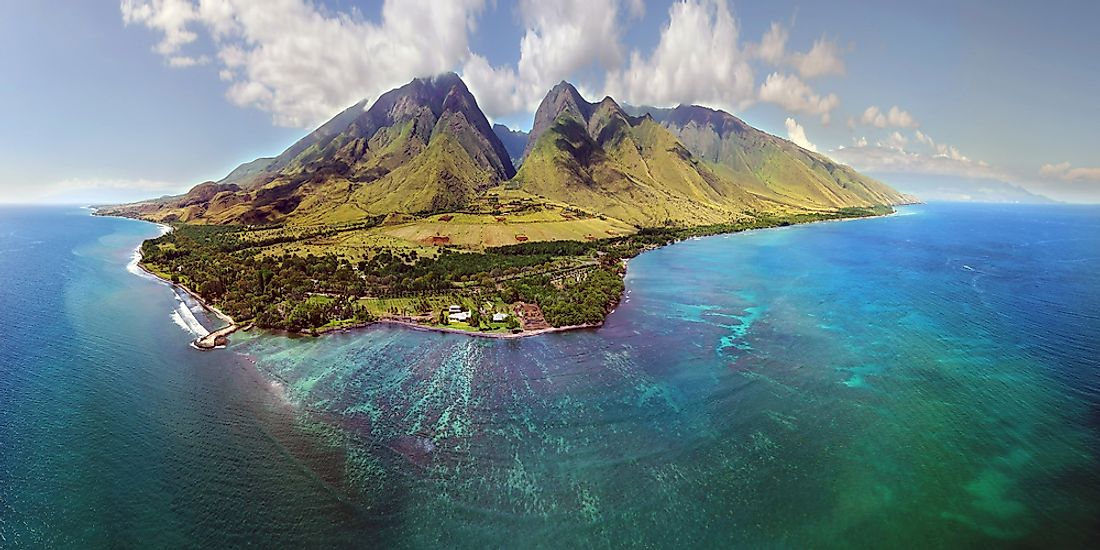How Were the Hawaiian Islands Formed?

The Hawaiian Islands are located in the North Pacific Ocean, extending over 2,400 kilometres. The southernmost region is the Island of Hawaii while its northern part is the Kure Atoll. The islands consist of eight main islands, many atolls, several islets, as well as seamounts. These Islands emanate from the Hawaiian-Emperor seamount chain, which is an enormous mountain located under the sea.
Formation of the Hawaiian Islands
The Hawaiian Islands underwent volcanic eruptions, which led to the creation of the series of islands. Magma, which is underground, rose until it erupted on the floor of the sea. When this magma reaches the surface, it is referred to as the lava, which solidifies and hardens as it comes into contact with the sea water. As a result, a volcano which is under the water is formed. Over time, a series of eruptions occurred and the lava piled onto the already formed underwater volcano which consequently leading to the formation of the island. As the tectonic plate which the island sits on shifted inches away, it gave room for another eruption. The islands shifted away from the hot spot leaving along a trail of islands. The Hawaiian Islands, presently atop of its hot spot, is believed to have been formed about 4.5 million years ago.
Each of the islands consists of primary volcanoes. In the case of the Big Island, for instance, it is made up of five primary volcanoes, namely, Hualalai, Kilauea, Kohala, Mama Kea, and Mauna Loa. Some of them are still active volcanoes, with Mauna Loa being the world’s largest active volcano. Lava still flows from some of these primary volcanoes, with Kilauea production the most substantial amount of lava.
The Hawaiian Islands are not equal according to age, with the farthest island from the hot spot being the oldest. This trend is also attributed to the nature of the islands’ formation on the sea floor. The sea floor onto which the Hawaiian Islands sit on is known as the Pacific Plate. The Pacific Plate is in constant motion over the earth’s layer, Asthenosphere. This plate moves towards the northwestern direction. As the plate inches away, it gives room for the formation of another hot spot, hence another volcanic eruption which leads to the formation of another island. Over time, the lava cools, volcanic eruption ceases, and factors such as erosion lead to the subsequent submergence of the older islands into the sea.
Other Theories
Some theories have been formulated on how the Hawaiian Islands were formed, apart from the above volcanic process. One of them is the theory which argues that the Hawaiian Islands were formed due to the impact of an asteroid which fell on the sea. In the process, the asteroid triggered volcanic activity which resulted in the oozing of magma, hence leading to the formation of the islands. However, such theory is not well-recognized since there is not enough evidence to support it.
Significance of the Hawaiian Islands
Geologists and researchers have found the Hawaiian Islands useful for their studies due to the frequent earthquakes and tsunamis in the region. Besides, it has become a tourist attraction site where visitors are perplexed by the series of islands. The sunny beaches and attractive places within the islands have made many people visit the region for fun.











